Pumps are mechanical workhorses that are essential, smoothly transporting fluids needed for many industries. This includes manufacturing, agriculture, energy, and more. Let’s learn the fundamental ideas of industrial pump technology, acting as a primer. It examines the fundamental principles, classifications, and mechanics of these devices. Types Of Pumps There are five types of industrial pumps Read more
Bell & Gossett
Pumps are mechanical workhorses that are essential, smoothly transporting fluids needed for many industries. This includes manufacturing, agriculture, energy, and more.
Let’s learn the fundamental ideas of industrial pump technology, acting as a primer. It examines the fundamental principles, classifications, and mechanics of these devices.
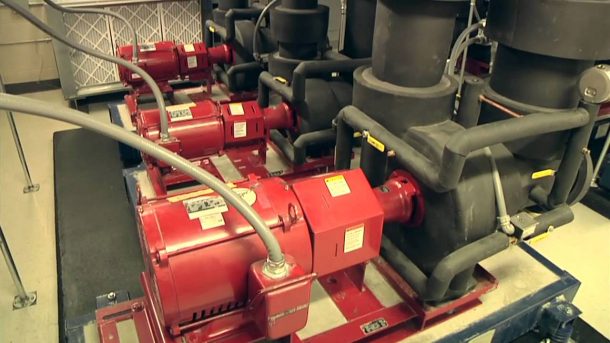
Types Of Pumps
There are five types of industrial pumps (check out Industrial Pumps Texas for more details). They are as follows:
- Centrifugal Pumps: To increase fluid velocity and pressure for uses such as water delivery, wastewater treatment, and HVAC systems, revolving impellers are used.
- Positive Displacement Pumps: Reciprocating or rotating mechanisms are utilized to transfer set amounts of fluid, making them perfect for precision applications in sectors including food processing, oil and gas, and pharmaceuticals.
- Diaphragm Pumps: These pumps are great for handling corrosive, abrasive, or viscous fluids, which are frequently found in chemical processing and sewage applications. They work by using a flexible diaphragm to create fluid movement.
- Gear Pumps: Gear Pumps are widely used in fuel transfer and hydraulic systems, and they work well with high-viscosity fluids by using revolving gears to transfer fluids by displacement.
- Peristaltic Pumps: Their gentle pumping action makes them ideal for delicate pumping tasks in food processing, labs, and pharmaceuticals. They work by using a flexible tube and rollers to generate fluid movement.
Operating Mechanisms
- Suction Phase: The suction phase starts with pump-priming, or generating low pressure, which allows fluid to enter through the suction part.
- Pressurization: It involves the pump’s operation, which uses reciprocating parts or rotating impellers to pressure or shift the fluid inside the pump.
- Pressure Generation: Pressure inside the pump rises as the pump works, giving the fluid energy and allowing it to pass through the discharge port and be used for its intended purpose.
- Fluid Movement: Propelled by the pump’s action, the pressurized or displaced fluid travels through the system, supplying vital fluid transport for a variety of industrial processes, including chemical processing, oil refining, and water supply.
Critical Components
The following crucial parts of industrial pumps are necessary to guarantee their effectiveness and functionality:
- Impellers/Rotors: In centrifugal pumps, these rotating parts give the fluid kinetic energy. This helps in raising the fluid velocity and pressure. To accommodate varied applications and flow requirements, they are available in a variety of designs.
- Casings/Housings: The components are vital for preserving pressure and preventing leaks in the pump system. They guarantee a tight seal between moving parts, guarding against fluid leaks and contamination.
- Seals And Gaskets: These components are vital for preserving pressure and preventing leaks in the pump system. They guarantee a tight seal between moving parts, guarding against fluid leaks and contamination.
- Motors or Drivers: Electric motors, engines, or turbines are examples of power sources that propel the pump‘s motion and supply the energy required for pressurization or fluid displacement.
- Bearings And Shafts: Support systems that reduce friction and guarantee smooth operation by preserving the alignment and stability of rotating parts.
Performance Parameters
The following performance metrics are essential for evaluating the efficacy and efficiency of industrial pumps:
- Flow Rate: This parameter indicates the pump’s capacity and ability to meet necessary demands by measuring the volume of fluid that passes through the pump in a given amount of time.
- Pressure: Pressure represents the force that the pump applies to the fluid; this force is essential for getting the fluid through obstacles in pipelines or other systems and to its final destination.
- Efficiency: Pump efficiency affects system reliability and operating costs. It is the ratio of input energy to output energy. In other words, it is how well the pump transforms energy into fluid power.
- Net Positive Suction Head (NPSH): NPSH shows the pressure margin that can be used to keep the pump from cavitation or creating vapor bubbles, ensuring damage-free operation.
Conclusion
To sum up, industrial pumps are vital components that power various industries in Texas and stimulate the state’s economy. It is essential to comprehend their workings, parts, and performance criteria to maximize productivity in industrial operations throughout the state.

https://youtu.be/MhqypPXJtxM?si=h-FhMaoiuUVe3c4w Frozen Tundra no longer. Mechanical Hub’s Hub on the Road series takes us to Lambeau Field. Lambeau’s mechanical contracting partner, Tweet/Garot, gives us a behind-the-scenes look at Lambeau’s mechanical room, which serves as the epicenter for snowmelt, field heat, and HVAC, as well as its prefabrication facility in Wrightstown, Wis Read more
Frozen Tundra no longer. Mechanical Hub’s Hub on the Road series takes us to Lambeau Field. Lambeau’s mechanical contracting partner, Tweet/Garot, gives us a behind-the-scenes look at Lambeau’s mechanical room, which serves as the epicenter for snowmelt, field heat, and HVAC, as well as its prefabrication facility in Wrightstown, Wis.
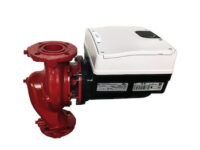
Building owners want to continue reducing operating costs and carbon footprint, switching to more efficient equipment. Combining the Xylem Smart Motor family with the industry proven e-90 pump series provides customers with a proven solution for HVAC applications that offers pump, motor and variable speed drive in an all-in-one product. The e-90E is a versatile Read more
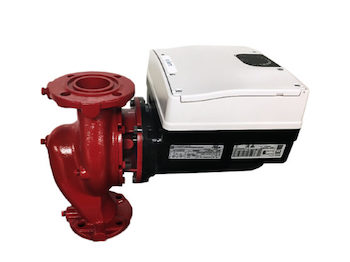 Building owners want to continue reducing operating costs and carbon footprint, switching to more efficient equipment. Combining the Xylem Smart Motor family with the industry proven e-90 pump series provides customers with a proven solution for HVAC applications that offers pump, motor and variable speed drive in an all-in-one product. The e-90E is a versatile close-coupled in-line pump designed for heating and cooling applications. Installed in either horizontal or vertical applications, the robust mechanical seal lowers maintenance costs and increases the life of the pump. The scope includes 12 combinations of high RPM e-90 models combined with the Xylem Smart Motor ranging up to 3HP.
Building owners want to continue reducing operating costs and carbon footprint, switching to more efficient equipment. Combining the Xylem Smart Motor family with the industry proven e-90 pump series provides customers with a proven solution for HVAC applications that offers pump, motor and variable speed drive in an all-in-one product. The e-90E is a versatile close-coupled in-line pump designed for heating and cooling applications. Installed in either horizontal or vertical applications, the robust mechanical seal lowers maintenance costs and increases the life of the pump. The scope includes 12 combinations of high RPM e-90 models combined with the Xylem Smart Motor ranging up to 3HP.
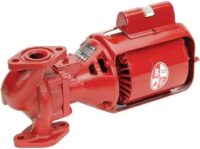
Electric water pumps are becoming an increasingly popular choice in a variety of applications, from programmable additional heating in vehicles to precision and efficiency in industrial settings. But how do these pumps work? In this blog post, we will explore the inner workings of electric water pumps, from the electrical energy input to the mechanical Read more
Electric water pumps are becoming an increasingly popular choice in a variety of applications, from programmable additional heating in vehicles to precision and efficiency in industrial settings. But how do these pumps work?
In this blog post, we will explore the inner workings of electric water pumps, from the electrical energy input to the mechanical energy output that drives the pumping process. We will also take a look at the main uses of electric water truck pump and how they have evolved over time. So, if you are curious about the technology behind these pumps, just keep reading.
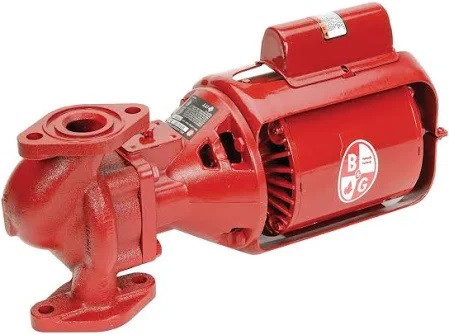
How Electric Water Pumps Work
Electric water pumps are powered by electricity, which is a great option for those who want to be environmentally conscious. These pumps can be used to move water in or around a home or business, and they are very versatile in their uses. If you’re considering installing an electric water pump system at your property, here’s what you need to know!
The Basic components of an electric water pump
There are three basic components that make up an electric pump system: the motor, the casing, and the impeller. The motor is what actually moves the water through the system; it’s powered by electricity, which comes from either a wall outlet or solar panels on your roof. The casing houses all of these components and keeps them safe from outside elements like dirt and debris (you’ll need to clean this part regularly). Finally, there’s the impeller—this is what actually pumps water through your pipes once all of those other parts have been put together properly!
How electric water pumps move water
The mechanics of an electric water pump are fairly straightforward: they use electricity to spin a turbine or impeller, which then moves water through pipes and into your house. The turbine or impeller itself is connected to two shafts: one that runs vertically and one that runs horizontally; when the shafts spin together they create suction pressure within the pipe system that moves the water up from its source (such as a well) into your house where it can be used for drinking or bathing purposes.”
Types of Electric Water Pumps
While electric water pumps come in all designs, shapes and sizes, it is important to understand their differences and how they fit your needs. In this section, we’ll provide a brief description of 3 of these pumps, how they compare and how they work, namely: submersible pumps, centrifugal pumps, and positive displacement pumps.
Submersible pumps
Submersible pumps are the most common type of pump used in residential homes and commercial businesses. They work by using a spinning impeller to force water through the pump’s body and out its discharge port. The process is similar to how a toilet works—the spinning impeller creates a suction that pulls dirty water into the pump’s body, where it’s cleaned by internal components before being pushed out of the discharge port.
Centrifugal pumps
Centrifugal pumps are often used when there isn’t room for a submersible pump, such as in large industrial settings where there is ample space for them to be installed above ground. Centrifugal pumps work by harnessing kinetic energy from moving parts to create pressure within the pump’s body, which forces dirty water through an intake port before being discharged through another port on the opposite side of the body (usually positioned above ground).
Positive Displacement pumps
Positive displacement pumps are the most common type of electric water pump. They are also known as constant-displacement pumps because they can deliver a set volume of water for each revolution.
Unlike centrifugal pumps, which draw water into a rotating impeller and force it out through a discharge pipe, positive displacement pumps move water through the entire pump without relying on any movement outside the pump’s casing. The impeller draws in a small amount of water at its center and pushes it out through an outlet opening. This action creates a vacuum behind the impeller that pulls in more water to replace what has been pumped out, maintaining constant flow throughout the entire cycle.
Conclusion
It’s clear that electric water pumps are a necessity for any home. They provide a safe and efficient way to transfer water from one location to another. Electric water pumps can be purchased in a variety of different forms, so it’s important to carefully consider the factors that matter most when choosing your preferred model. This can include things like size, design, power supply, and cost.
In this article, you have learned the importance and function of electric water pumps. You have also been given information on 3 different types of electric water pumps available, as well as the factors to consider when choosing one. Hopefully, the information provided will help you select the one best suited to your needs.
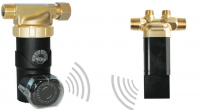
Designed for plumbing systems without a recirculation line, the ecocirc wireless instant hot water system from Bell & Gossett, a Xylem brand, uses electronically commutated motor (ECM) technology to operate using as little as 20 watts of power. Installed under the sink, the system’s battery operated paired valve, equipped with an onboard temperature sensor and Read more
Designed for plumbing systems without a recirculation line, the ecocirc wireless instant hot water system from Bell & Gossett, a Xylem brand, uses electronically commutated motor (ECM) technology to operate using as little as 20 watts of power.
Installed under the sink, the system’s battery operated paired valve, equipped with an onboard temperature sensor and wireless RF transceiver, communicates with the circulator pump mounted to the water heater or hot water source to deliver temperature controlled hot water.

The ecocirc wireless instant hot water system increases energy savings through advanced technology that turns the pump on only when hot water needs replenishing. The lead-free system also contains a built in 24-hour timer with an optional push button start to adjust the system to the user’s schedule.
A paired valve is installed under the sink, or other water outlet, farthest away from the water heater, where hot water takes the longest to arrive. The valve is battery operated and equipped with an onboard temperature sensor and wireless RF transceiver and communicates with the circulator pump mounted to the water heater or hot water source.
The ecocirc wireless is lead-free and features technology that turns the pump on only when the system needs to be replenished with hot water. The pump’s unique microprocessor provides the ECM the precise frequency and voltage for maximum efficiency. A few of the key features and benefits include:
• Easy installation, no electrical outlet required under the sink
• Built-in 24-hour timer which allows system to adjust to users schedule
• Operated via wireless RF communication, ranging approximately 150 Feet
• Temperature and timer controlled
• Optional push button start
• Valve operates using two (2 AA batteries)
• Maximum fluid temperature of 203°F/95°C
• Maximum line pressure of 145 PSI
For more info, click here.
